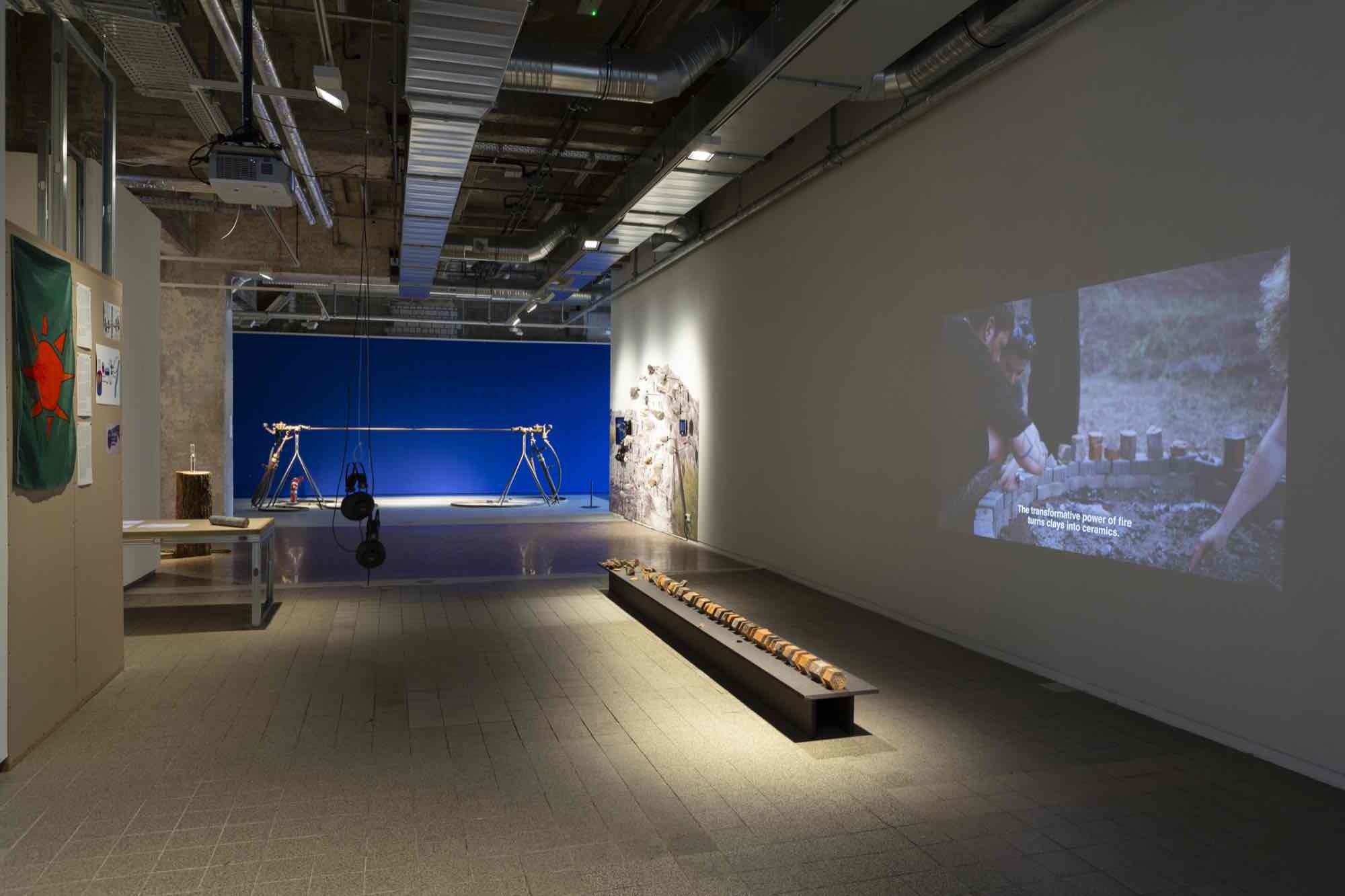SALT. CLAY. ROCK.
On Nuclear Pasts and Radiant Futures
30 Nov 2024 - 09 Feb 2025
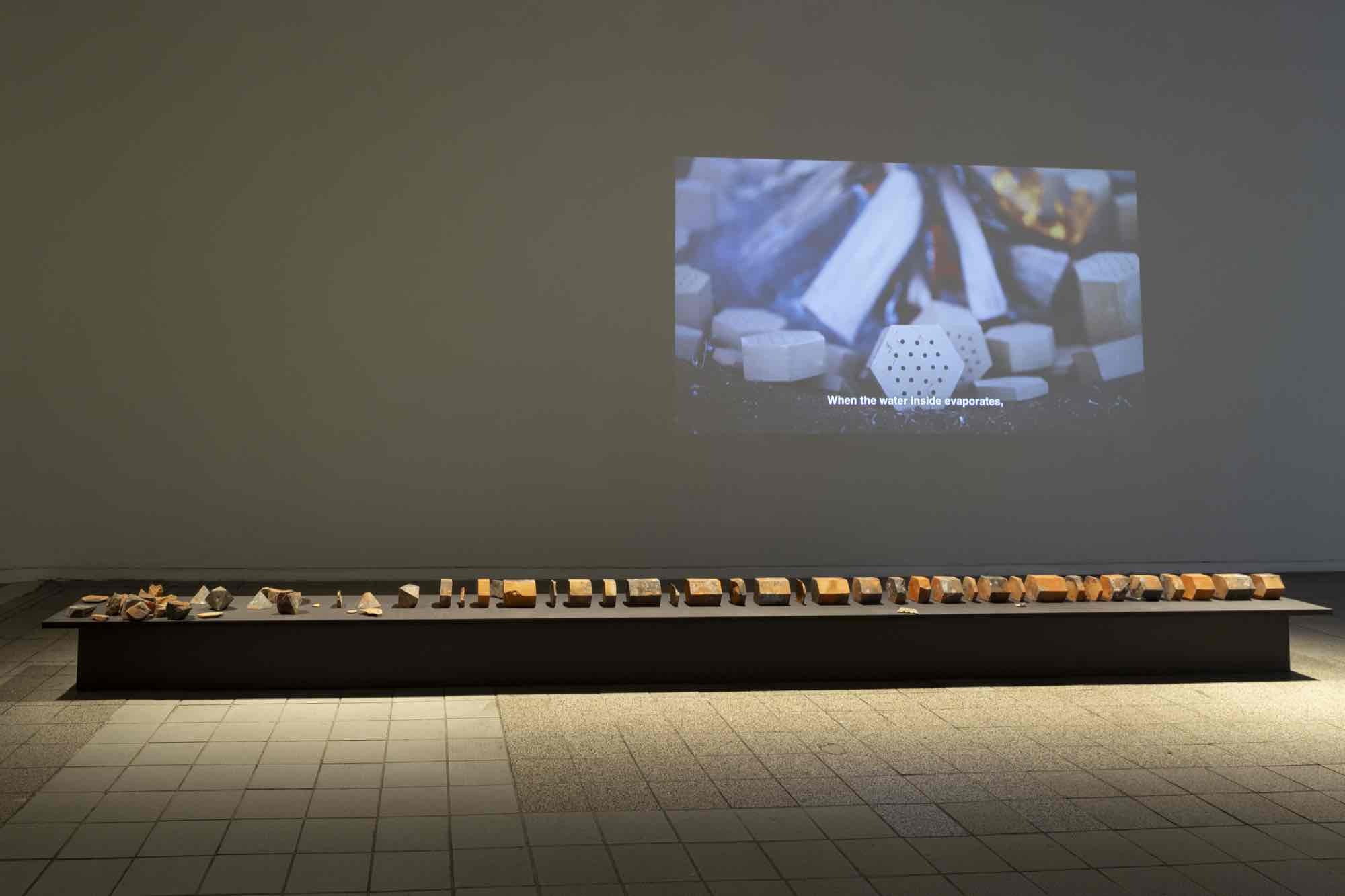
Csilla Nagy & Rita Süveges, Overcoming Time, SALT. CLAY. ROCK., nGbK, installation view, 2024. Photo: Lucie Marsmann
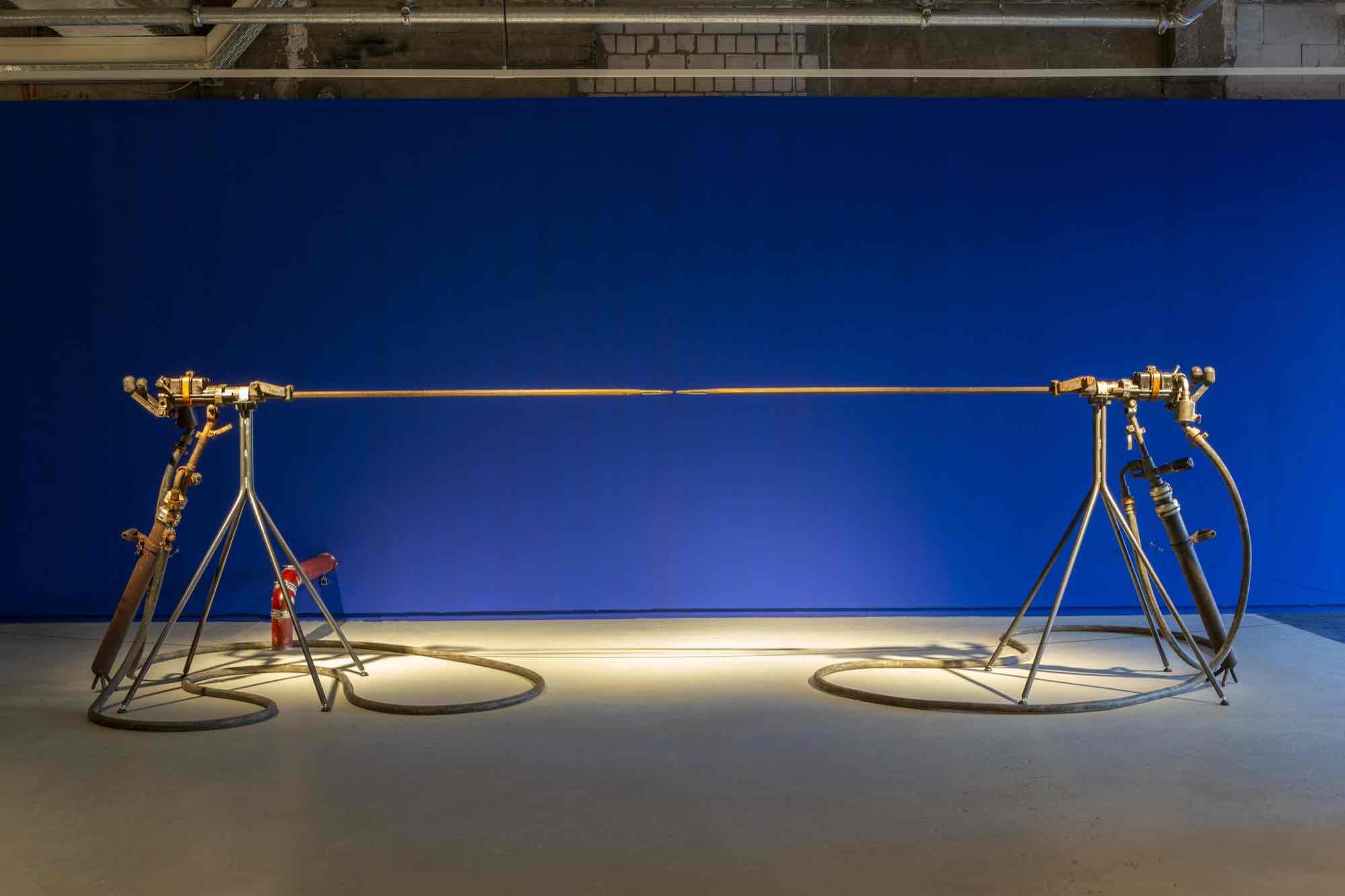
Ana Alenso, Pitch and Blende, SALT. CLAY. ROCK., nGbK, installation view, 2024. Photo: Lucie Marsmann
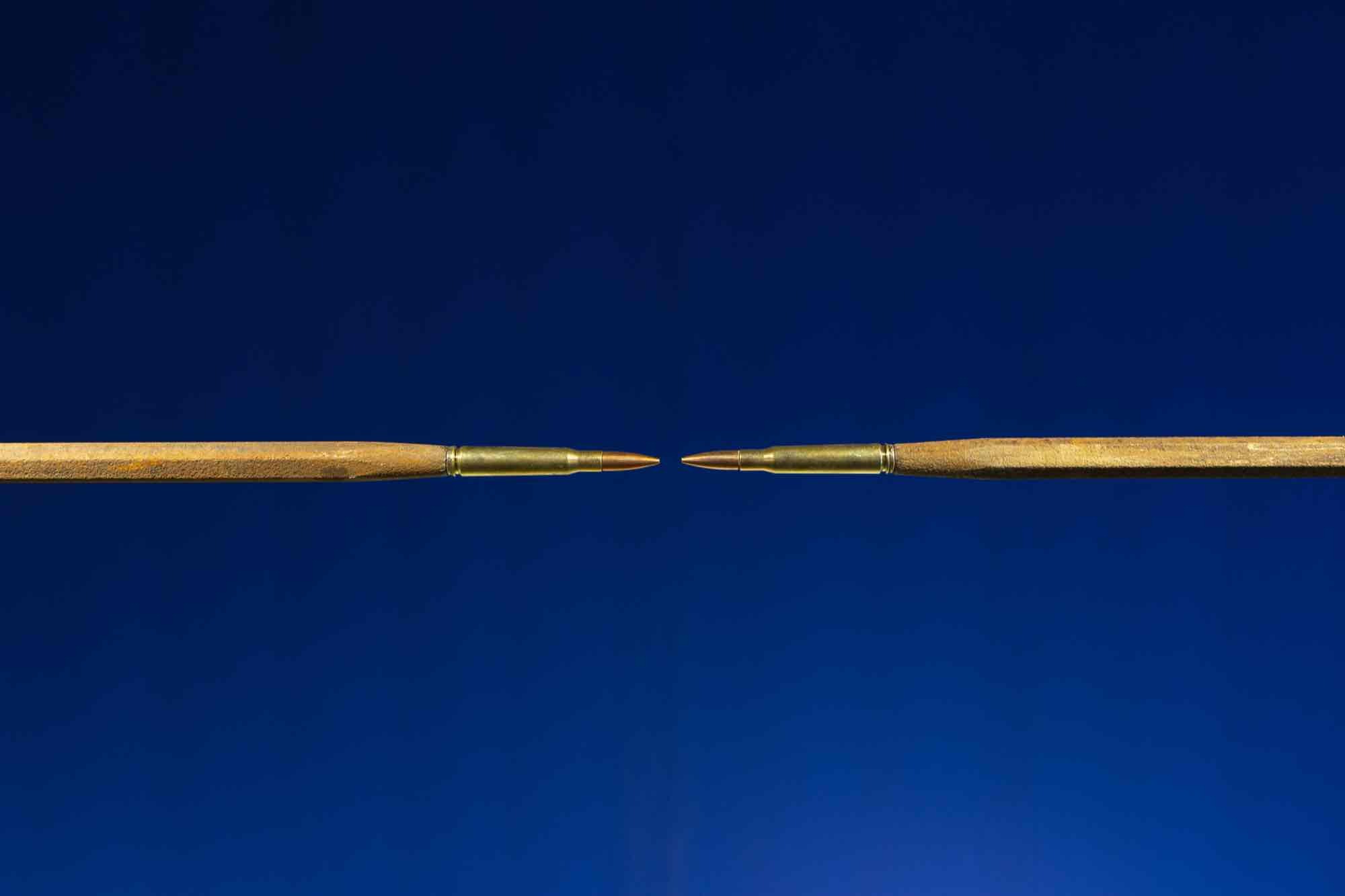
Ana Alenso, Pitch and Blende, SALT. CLAY. ROCK., nGbK, installation view, 2024. Photo: Lucie Marsmann
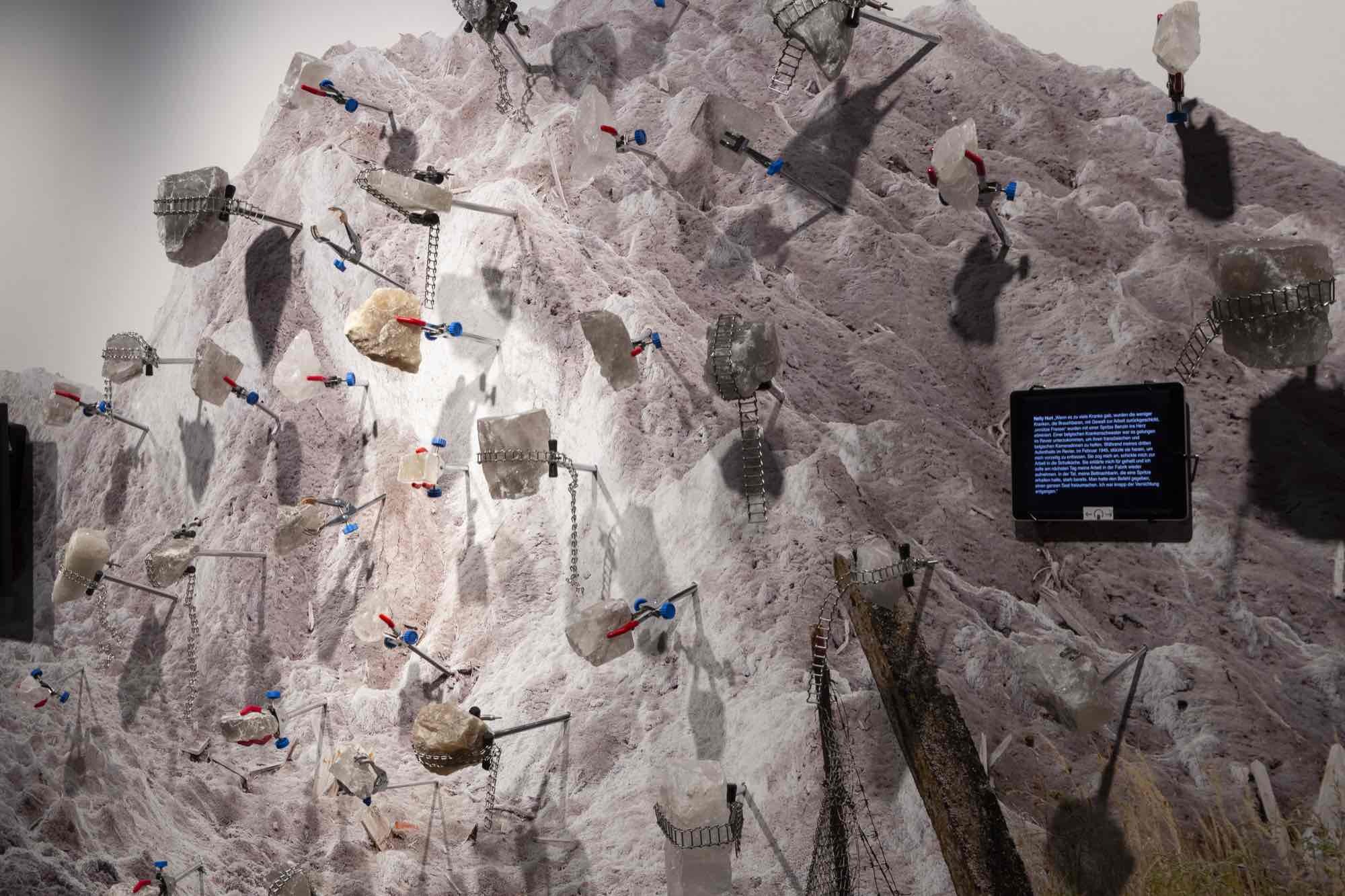
Sonya Schönberger, 50 Million < - > 1 Million (This One Life), SALT. CLAY. ROCK., nGbK, installation view, 2024. Photo: Lucie Marsmann
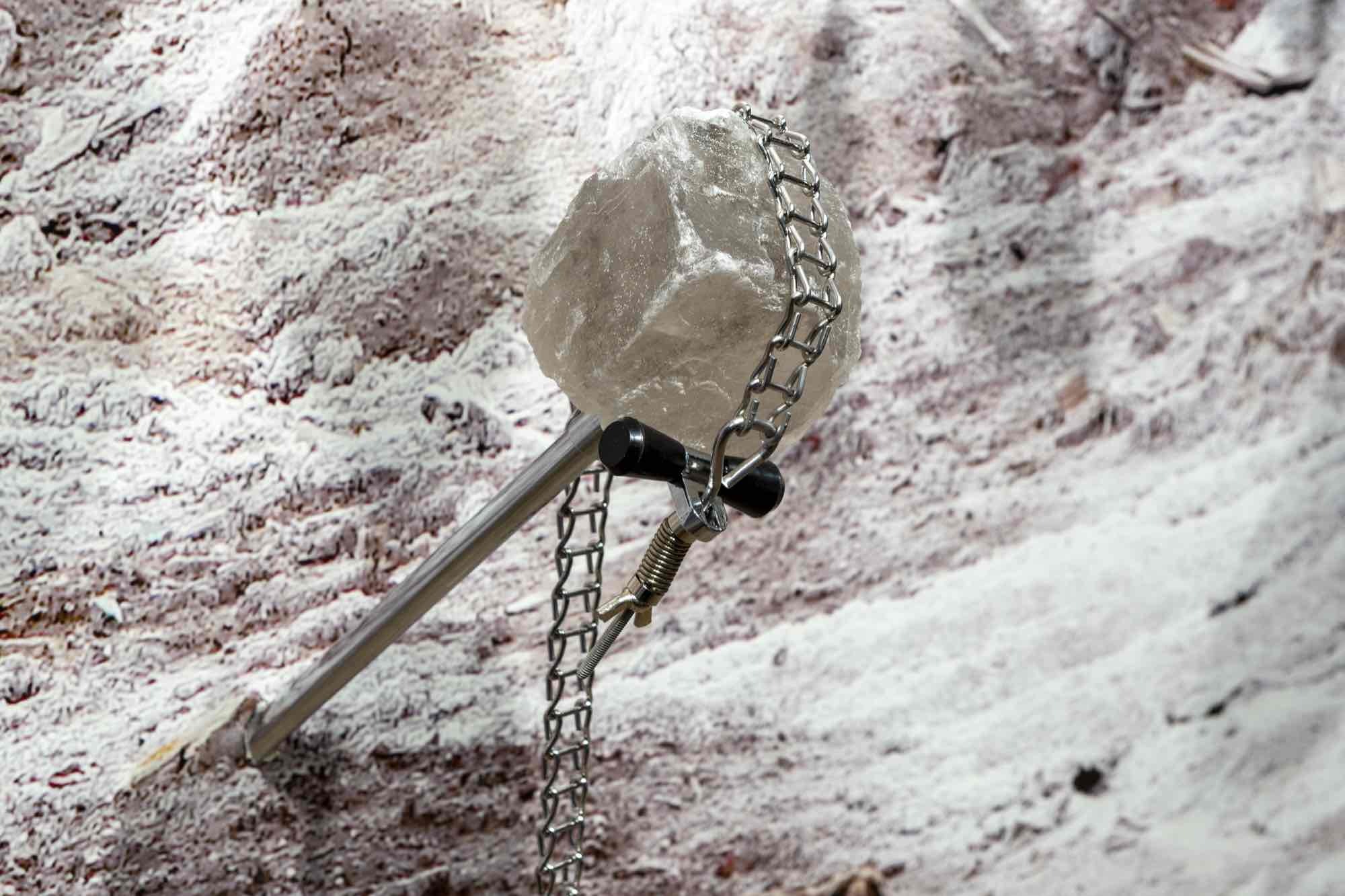
Sonya Schönberger, 50 Million < - > 1 Million (This One Life), SALT. CLAY. ROCK., nGbK, installation view, 2024. Photo: Lucie Marsmann
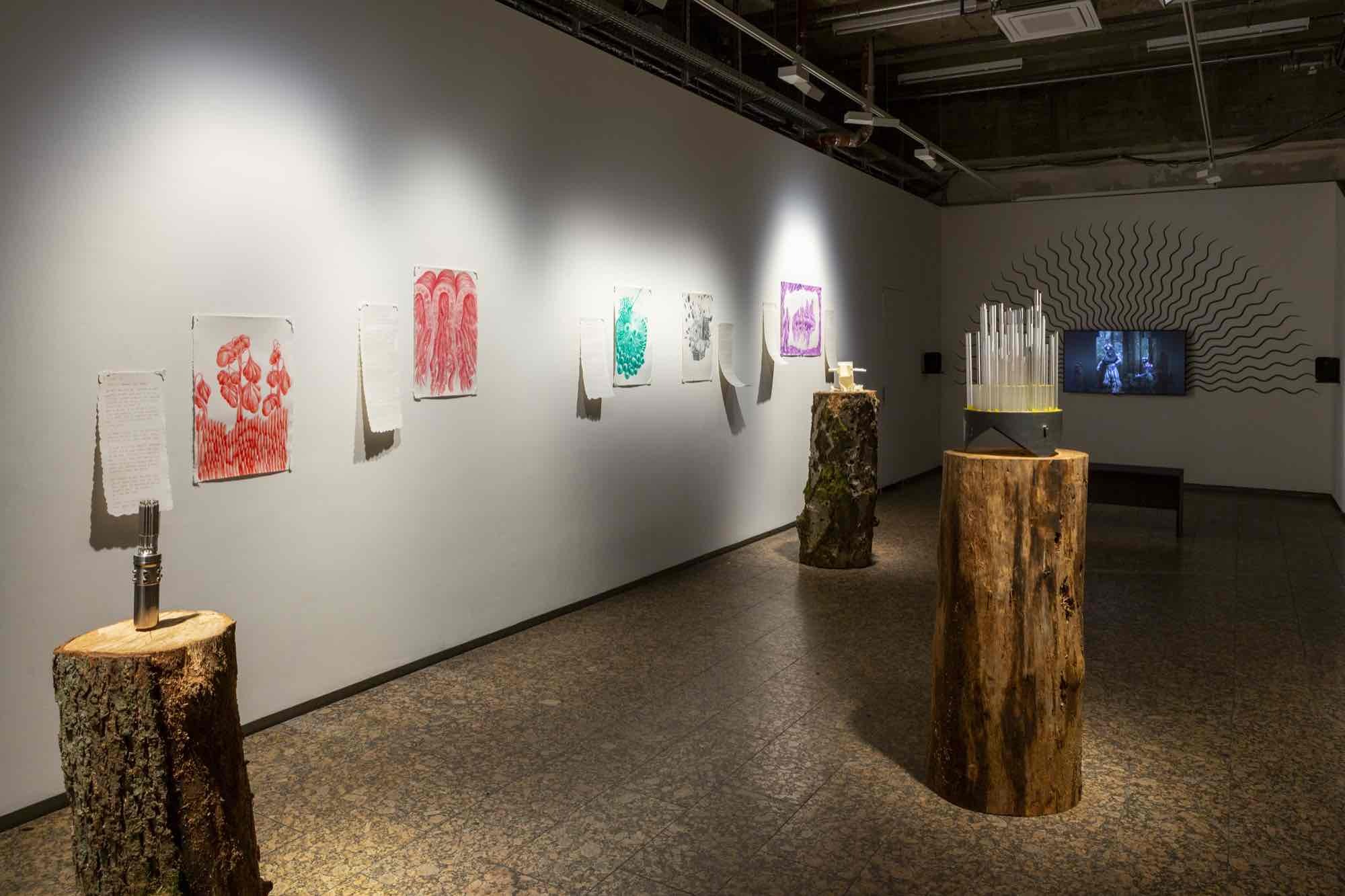
Front: Dominika Trapp, Nobody Dreams of Nuclear Power Plants, back: András Cséfalvay, Prometheus Unbound, Total Sacrifice. For Three Voices, Sung Sadly but with Vigor, SALT. CLAY. ROCK., nGbK, installation view, 2024. Photo: Lucie Marsmann
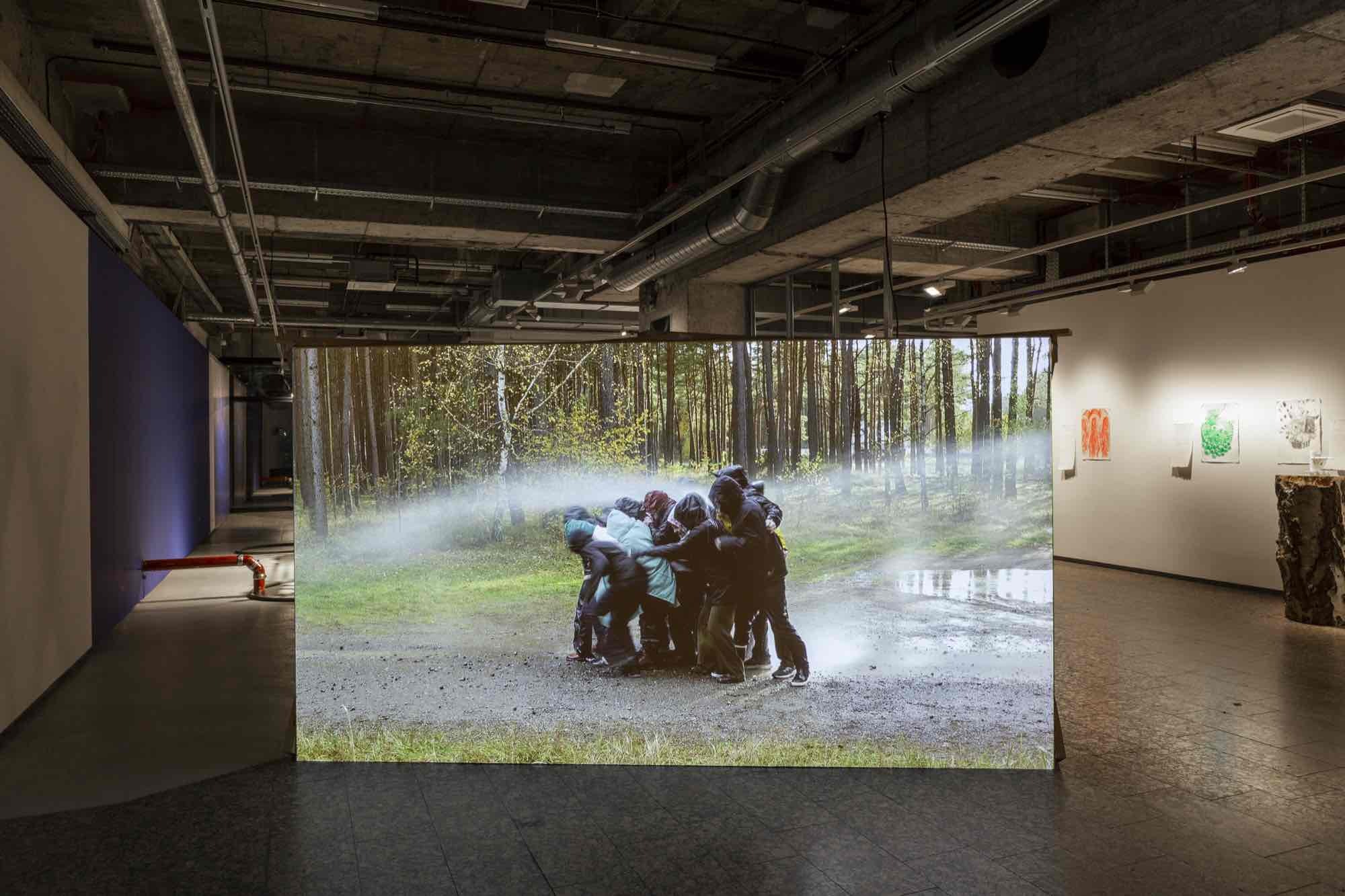
Anna Witt, Dancing on a Volcano, SALT. CLAY. ROCK., nGbK, installation view, 2024. Photo: Lucie Marsmann
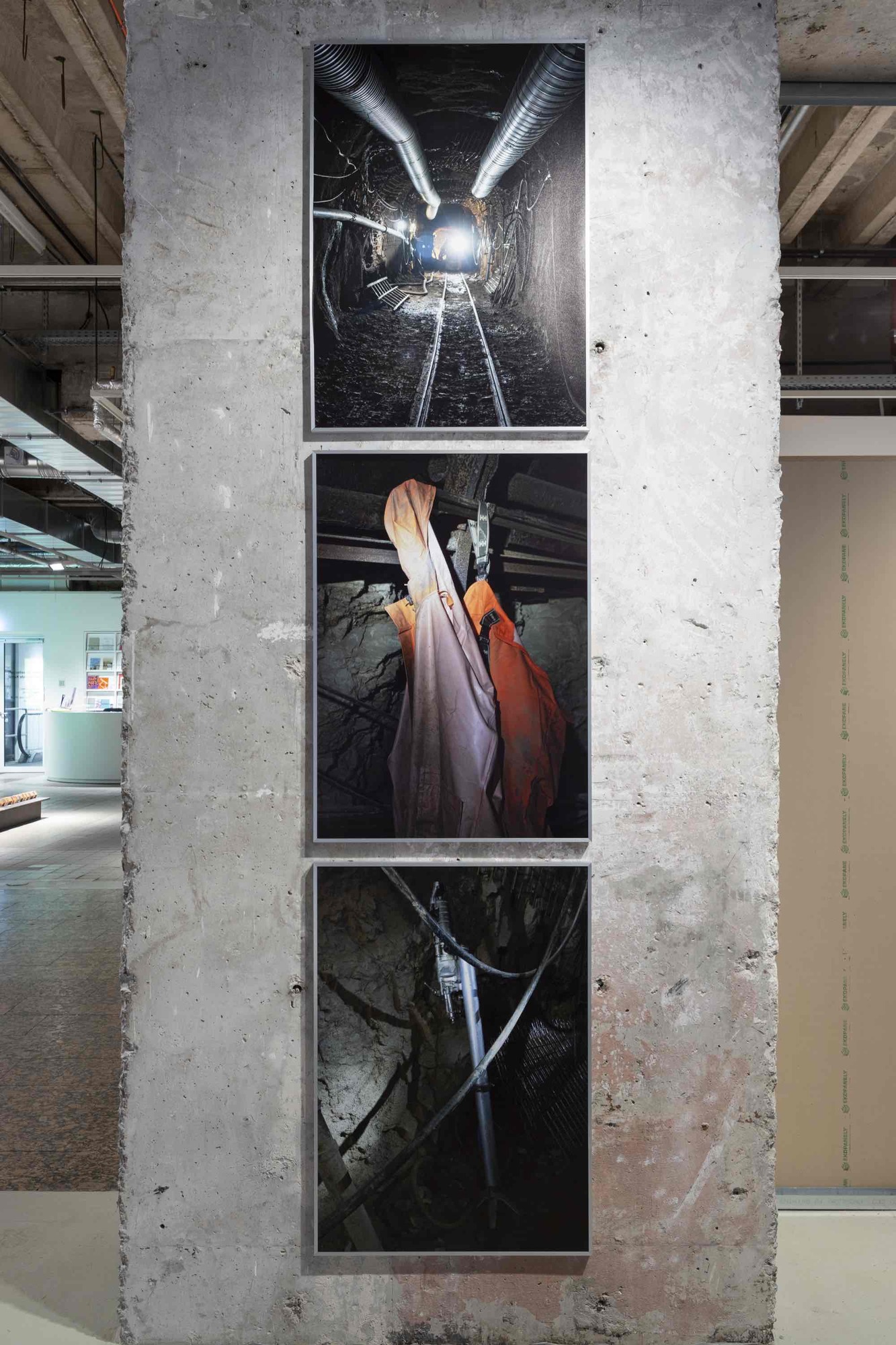
Ana Alenso, Pitch and Blende, SALT. CLAY. ROCK., nGbK, installation view, 2024. Photo: Lucie Marsmann
Ongoing geopolitical conflicts and the related energy crisis pose new questions regarding the toxic legacies of nuclear infrastructures and the search for energy alternatives. The two-year artistic-curatorial research project SALT. CLAY. ROCK. On Nuclear Pasts and Radiant Futures investigates how nuclear industries and infrastructures affect our lives, not only delving into the production of nuclear energy and the storage of radioactive waste, but also how impacted communities coexist with their material, social and economic consequences on a daily basis. The exhibition and public program at nGbK shares the results of extensive research done by the participating artists and curators of the nGbK work group, exploring connections between energy, politics, ecology and social movements from a translocal point of view.
The title SALT. CLAY. ROCK. is inspired by the three materials—salt, clay and granite—which are currently considered the most suitable for the storage of radioactive waste. The project juxtaposes the situation in Germany and Hungary, two countries that have chosen radically different paths when it comes to nuclear energy. While Germany initiated its nuclear exit in 2023 with the shutdown of all nuclear power plants, Hungary is building a new nuclear power plant, the heavily debated PAKS II. Despite these differences, both countries are challenged by the search for final repositories for their high-level radioactive waste, which according to an EU regulation, has to be found within national borders. This is an unresolved issue globally; with the exception of the Finnish final repository Onkalo, planned to open in 2025, no other country has accomplished building a safe storage for this high-risk by-product of energy production.
The exhibition SALT. CLAY. ROCK. connects the city of Berlin with rural places in Germany and Hungary that host nuclear infrastructures such as uranium mines, power plants and waste repositories, or have been and still are important sites of anti-nuclear resistance. It presents nine new commissions resulting from the two-year research undertaken by the artists with the curatorial team. Many of the works were created in dialogue with local communities, foregrounding their subjective and grassroots perspectives. This shows how those directly impacted by the day-to-day reality of nuclear infrastructures, coexist with its consequences, as well as its looming yet invisible dangers.
The exhibition is accompanied by a public program including guided tours, performances, discussions and film screenings, which will unfold the artistic-curatorial research and offer additional perspectives on the key questions of the exhibition.
Funded by the Zero programme of the German Federal Cultural Foundation, which aims to support cultural institutions in developing climate-neutral forms of cultural production, SALT. CLAY ROCK. On Nuclear Pasts and Radiant Futures has also been an experiment in producing an extensive transnational research project in a climate-neutral way, in line with the practical and conceptual challenge of thinking about energy futures. This also enables nGbK to position itself more clearly in sustainability discourses and to use its multiplier effect as an art institution.
Artists: Ana Alenso, András Cséfalvay, Krisztina Erdei with Dániel Misota, Csilla Nagy & Rita Süveges, Sonya Schönberger, Marike Schreiber, Katarina Šević, Dominika Trapp, Anna Witt
The title SALT. CLAY. ROCK. is inspired by the three materials—salt, clay and granite—which are currently considered the most suitable for the storage of radioactive waste. The project juxtaposes the situation in Germany and Hungary, two countries that have chosen radically different paths when it comes to nuclear energy. While Germany initiated its nuclear exit in 2023 with the shutdown of all nuclear power plants, Hungary is building a new nuclear power plant, the heavily debated PAKS II. Despite these differences, both countries are challenged by the search for final repositories for their high-level radioactive waste, which according to an EU regulation, has to be found within national borders. This is an unresolved issue globally; with the exception of the Finnish final repository Onkalo, planned to open in 2025, no other country has accomplished building a safe storage for this high-risk by-product of energy production.
The exhibition SALT. CLAY. ROCK. connects the city of Berlin with rural places in Germany and Hungary that host nuclear infrastructures such as uranium mines, power plants and waste repositories, or have been and still are important sites of anti-nuclear resistance. It presents nine new commissions resulting from the two-year research undertaken by the artists with the curatorial team. Many of the works were created in dialogue with local communities, foregrounding their subjective and grassroots perspectives. This shows how those directly impacted by the day-to-day reality of nuclear infrastructures, coexist with its consequences, as well as its looming yet invisible dangers.
The exhibition is accompanied by a public program including guided tours, performances, discussions and film screenings, which will unfold the artistic-curatorial research and offer additional perspectives on the key questions of the exhibition.
Funded by the Zero programme of the German Federal Cultural Foundation, which aims to support cultural institutions in developing climate-neutral forms of cultural production, SALT. CLAY ROCK. On Nuclear Pasts and Radiant Futures has also been an experiment in producing an extensive transnational research project in a climate-neutral way, in line with the practical and conceptual challenge of thinking about energy futures. This also enables nGbK to position itself more clearly in sustainability discourses and to use its multiplier effect as an art institution.
Artists: Ana Alenso, András Cséfalvay, Krisztina Erdei with Dániel Misota, Csilla Nagy & Rita Süveges, Sonya Schönberger, Marike Schreiber, Katarina Šević, Dominika Trapp, Anna Witt

